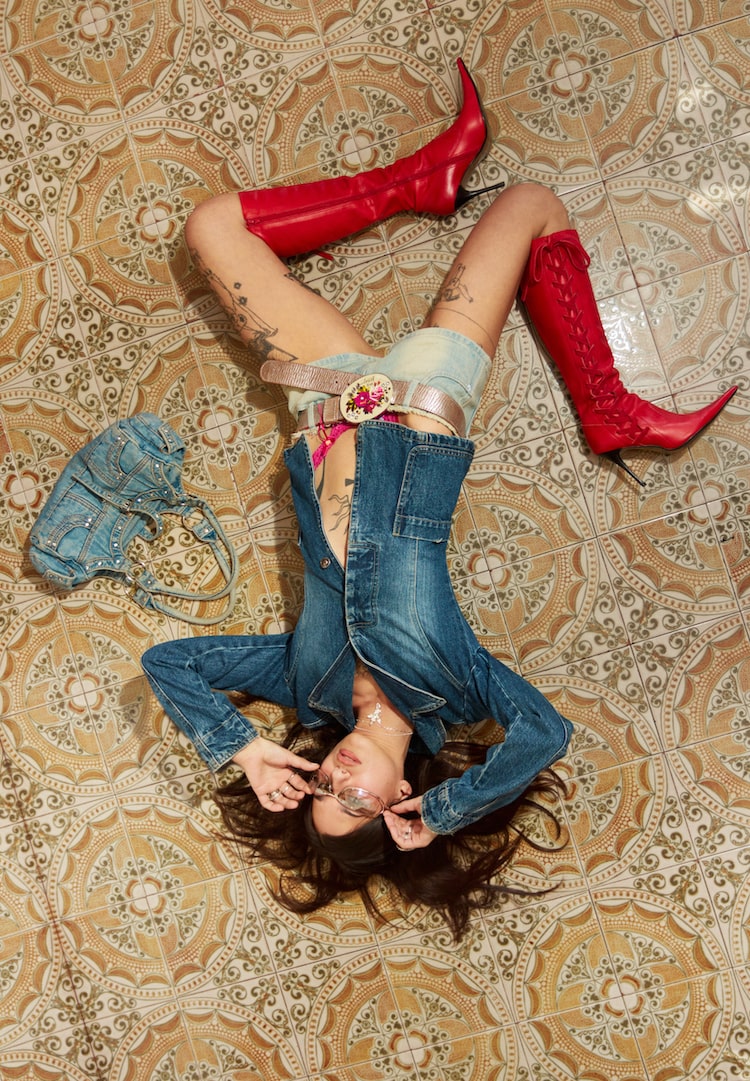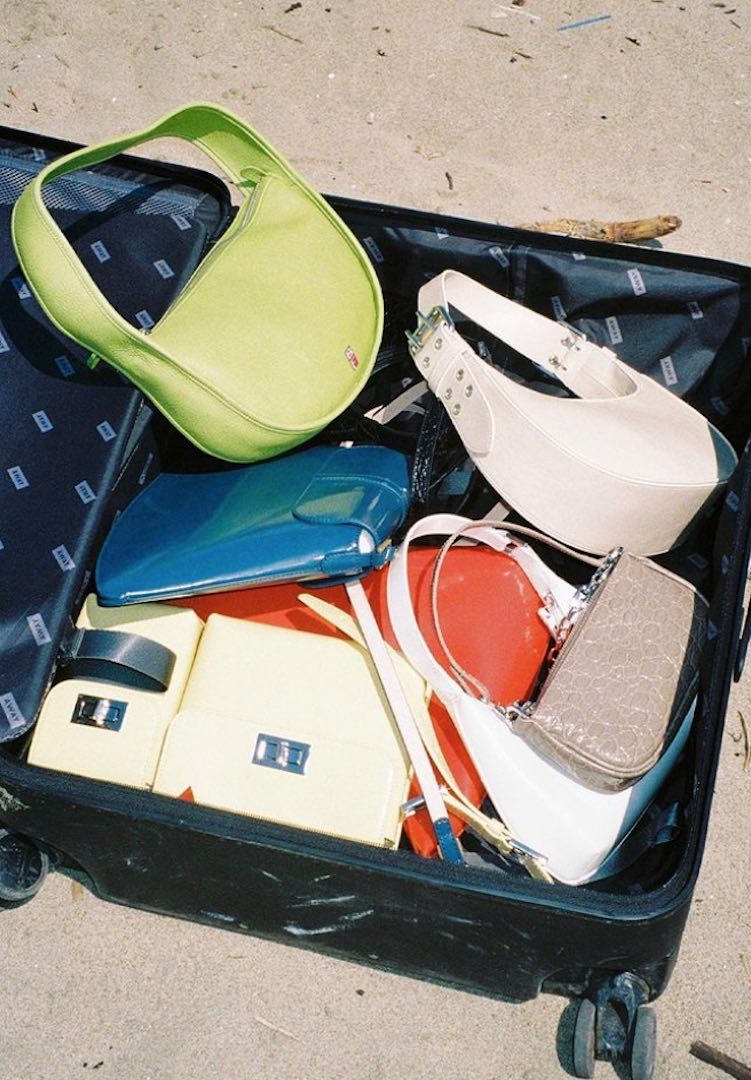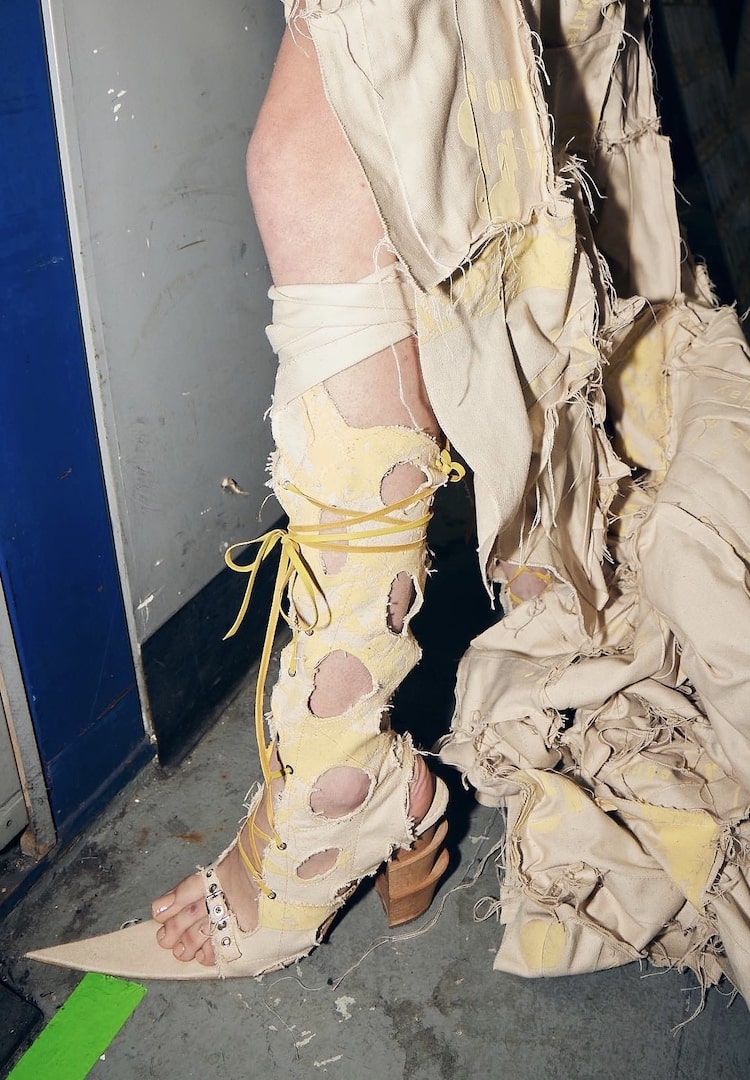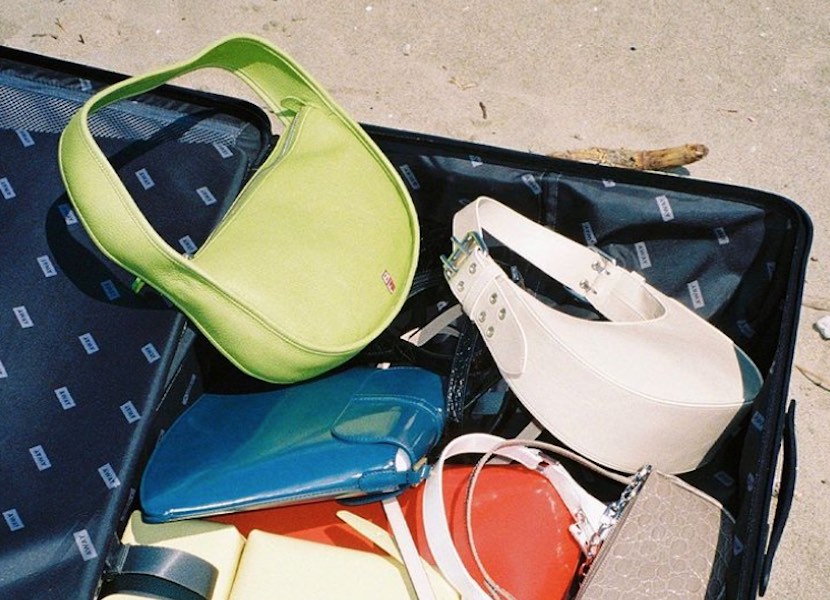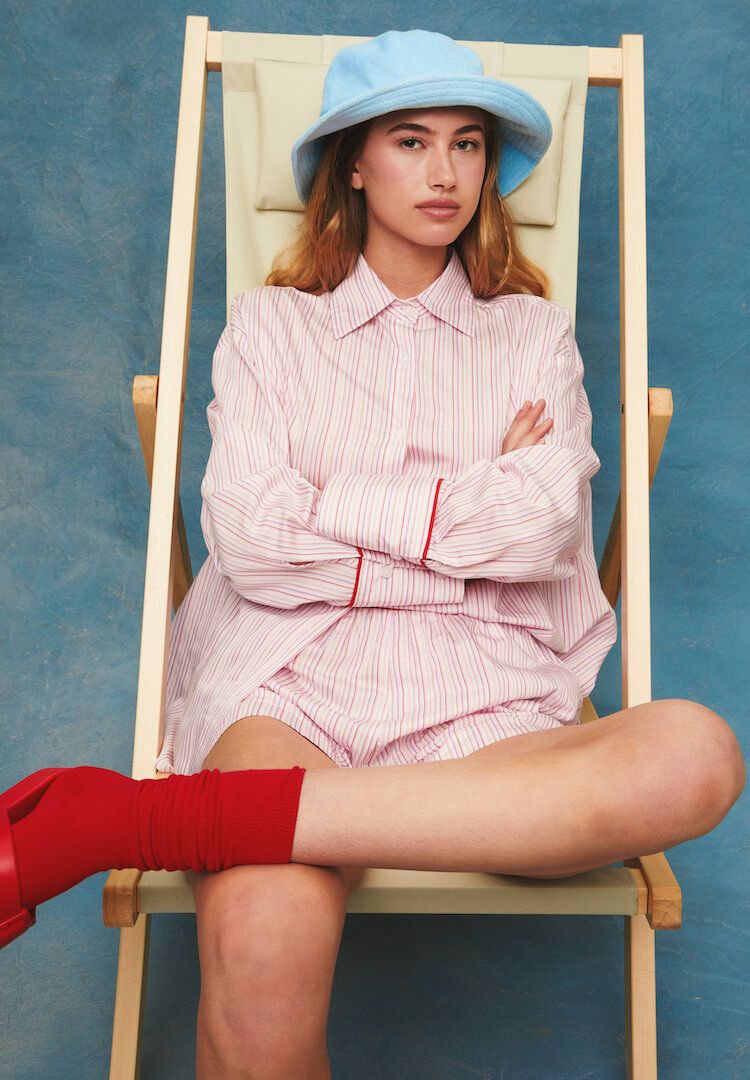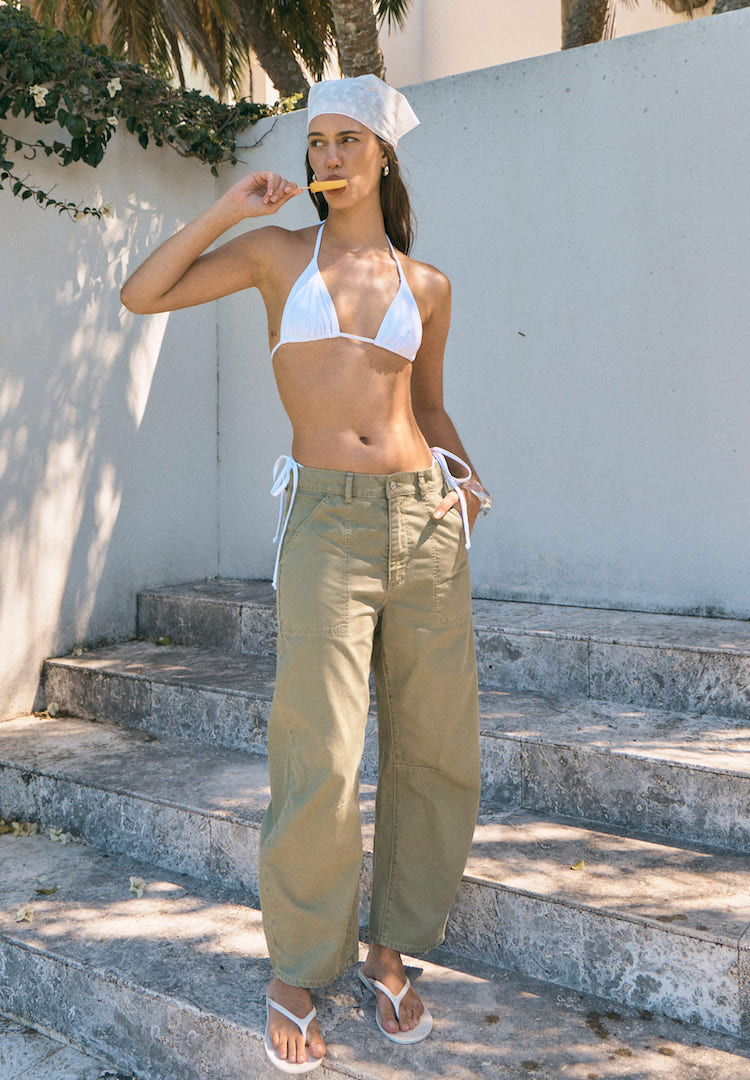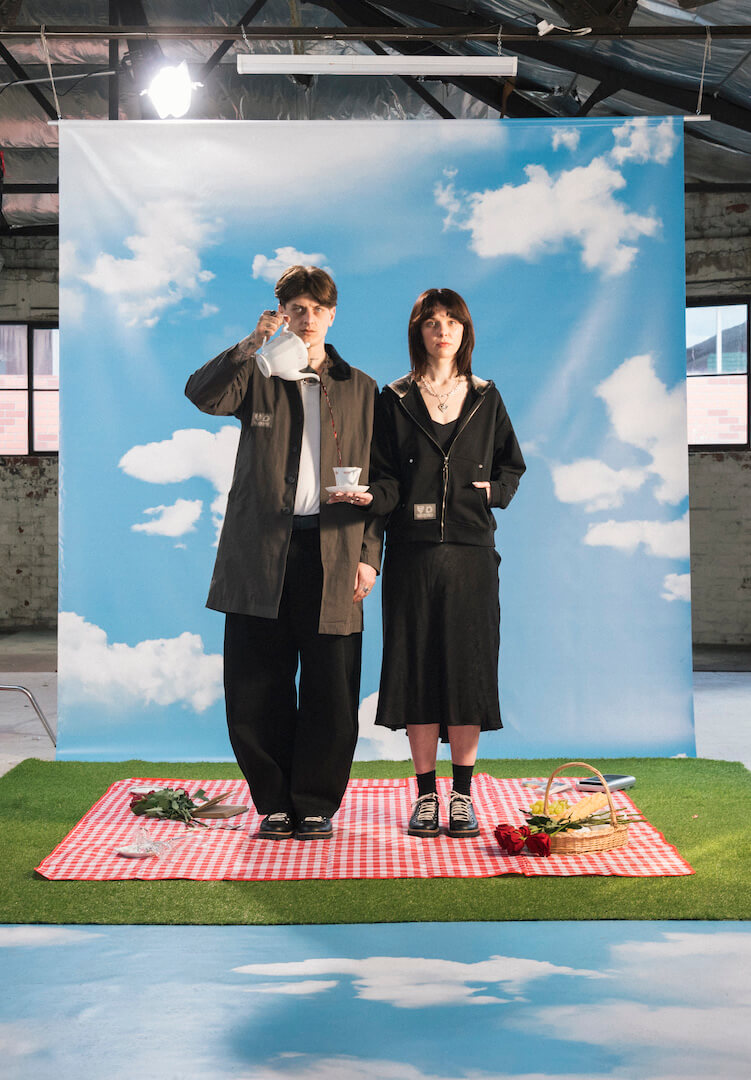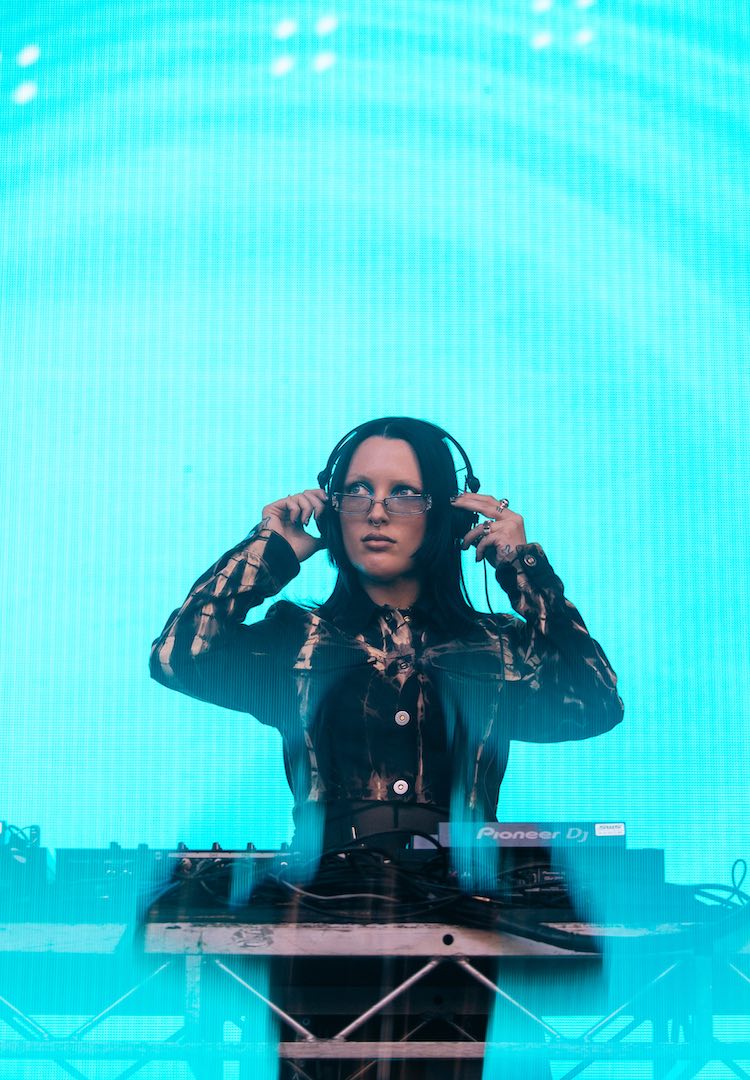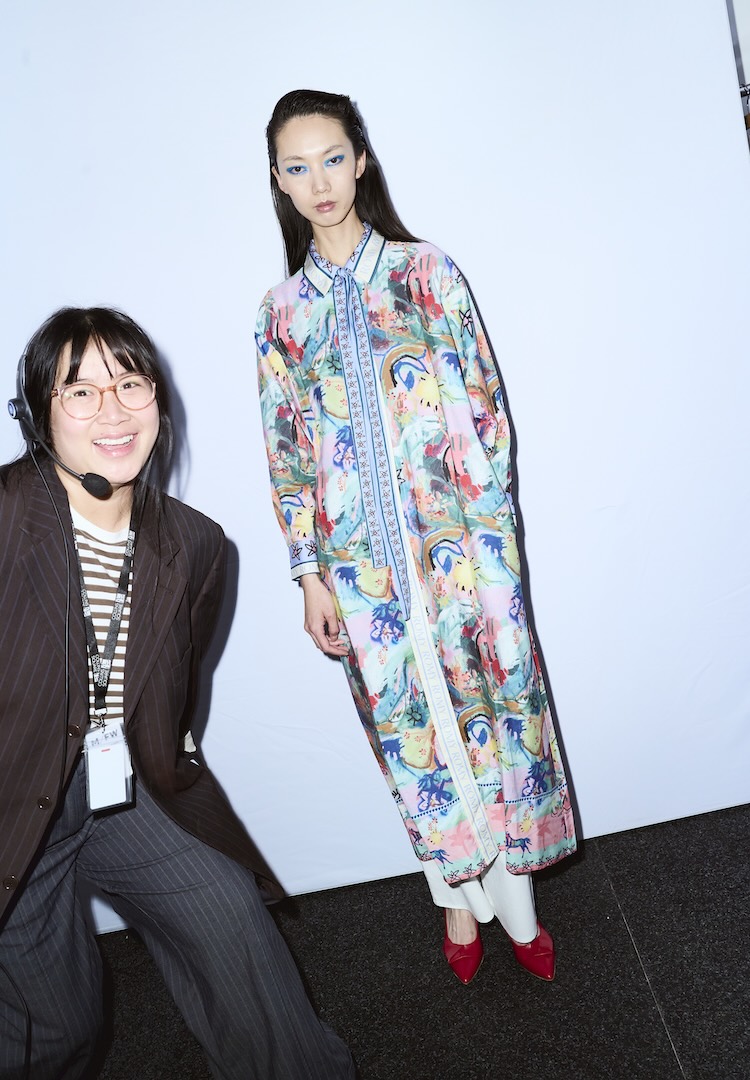What does a fashion buyer actually do?
IMAGE VIA @byfar_official/INSTAGRAM
WORDS BY NATASHA SCHAPOVA
Unpacking the mysterious world of fashion buying.
Ah, the world of fashion. It supposedly has a boundless array of jobs, but each of them seems about as accessible as those presented to us in The Devil Wears Prada. Such movies have imagined the fashion industry to be elitist.
Without a concoction of luck, beauty, and impeccable taste you can forget about being recruited. But luckily, real life isn’t always how it’s represented in the movies, and a career in fashion isn’t inevitably paired with an intimidating boss.
Curious about other jobs in fashion? Head to our Careers page.
Fashion jobs have been largely excluded in the countless career pamphlets handed out throughout our schooling lives, so it’s no wonder the majority of us furrow our brows when wondering what the heck a fashion buyer even does. Other than the obvious, I’ve come to learn that they do much more than you would think, and surprisingly, a fashion degree isn’t even a prerequisite.
To delve deeper into the many mysteries of fashion buying, I sat down with Danielle Santin, a fashion buyer who’s been in charge of buying womenswear for department stores like Myer and David Jones.
What are your main responsibilities as a buyer?
Our key responsibility is dealing with all the product that comes into the store. So, we’re responsible for every single garment that comes in and we figure out which stores it should be sent to. We have to choose whether it goes to some of our more premium stores or all the way down the chain. On top of that, we’re in charge of the financial reporting which includes analysing whether that stock trades.
We’re also the relationship manager between the brands and the company. Every single day I’ll be liaising with brands, talking to them about new collections, discussing what happens with their ranges when they don’t work, and when the ranges do work, then equally we’re also involved in all the marketing and the promotions. We liaise with the PR team and the marketing team every day, so it’s a very broad role.
How do you choose what products make it onto the shop floor?
As a buyer, we must choose which brands and collections to stock at Myer, so to do that we go to showings. These are organised specifically for buyers, where a brand can showcase their upcoming collection. These usually happen anywhere from six months to a year before the collection would launch. Usually, we work a year in advance, so we’d go to the showing and the brand, or the designer, would present a collection and from there my role would be to select the styles that I know our customers would love.
From there, you also decide which demographic of customers would love the designs. Whether it’s going to be in your city stores, where the customers are a bit more edgy, or maybe it’s down in some of your suburban stores, where we would send more of a commercial range. You also work quite closely with the brand and the designer on colour palettes.
If you think the colour palettes aren’t quite right for your store, you would work on new colour palettes or you might tweak a couple of styles with the brand, so you’re working very closely with the brands on the ranges that might come in. We’re working with designers from everywhere, so I might be collaborating with local suppliers in Melbourne, or I’ve got a lot of international brands that I work with as well, so usually, I would be travelling overseas and working with them on the ranges.
What qualifications and prior experience do fashion buyers typically have?
It can really range. I think your experience is probably more essential, you had to have worked through buying assistant roles [and] you usually would have come from a retail background. At university, I majored in marketing, which helped me understand the customer. Every decision you make in buying is about the customer, so you need to really understand their buying habits and what they’re looking for. My job as a buyer is to look a year ahead and think ‘What does our customer want?’, so marketing really helped me gain [a] better understanding.
I know most of the buyers in the business have gone through fashion and merchandising courses so there are definitely different ways you can get into buying and different career paths you can take but you have to be really savvy and business-minded to be able to manage that much stock, understand the reports, and analyse your business.
What was your career path?
I started at Myer nine years ago working in retail, in the Melbourne city store, and I absolutely loved it. I spent so much time learning about the customer, the product and how it was manufactured, the type of hand feels and type of fabrication. While working there, I made myself well-known to the buyers when they’d come into the store by chatting to them and making sure I knew what they were looking out for. From there, an opportunity came in the head office as a buying assistant in menswear.
Later, I got promoted into a concession role, which is probably not the traditional career path for a buyer, but with our business, we have a large concession portfolio. So, I looked after our brand partners that have shops within our stores, being the day-to-day liaison with them, for brands like French Connection, Seed, Taking Shape, Cue, Veronika Maine etc. I learnt all about managing suppliers, the finer detail of getting stock into stores, and from there I went to an allocation role which revolves around planning and analysis.
There, my responsibility was to allocate which stores the stock went to and how much we sent them, so it’s a very analytical role which really set me up for buying, because you have to be very analytical. Whilst it is a very glamorous job you do spend 90 per cent of your day looking at reports, analysing your trade and looking at what product did or didn’t work within your stores. After that, I was promoted into a buying role which is where I’ve been for the last three years.
What is the general career path?
Lots of people come from different backgrounds, some go through product development, some through sales, and some through the more traditional route of being a buying assistant, maybe product development assistant or allocation and then a buyer, and there’s definitely a variety of different backgrounds in terms of degrees. Some people have business degrees like I do, and some people have fashion degrees – I think there are benefits to both.
What is a typical day for you?
No two days are the same, it is kind of crazy from the minute I get online at around eight in the morning. Mondays typically we’re going through trade, looking at what worked and what didn’t work, and we’re reacting very quickly. We’re working out if we need to push more stock to stores or if we need to move the stock from one store to another. But then any other day could be anything ranging from suppliers, attending showings, collaborating with new brands, or partnerships with a potential new brand that I might find while reacting to what’s going on in the market.
When we went into COVID we had to react quickly, so I was looking for brands that were selling sweats and tracksuits, very different compared to what I’d normally be looking for. We also do a lot of travelling to different stores and interstate because we have quite a few different suppliers there. The [inability to] travel has been very challenging, especially without travelling internationally because you form a much better connection with suppliers when you meet them face-to-face, and you can talk through product much easier.
It’s really come down to the relationships you already had with your suppliers. You have to trust each other, and use Zoom a lot more, being descriptive with the product and the fabrications to make sure that you’re both on the same page of what the product looks like and whether it will translate to your stores. But it has had a very big impact, not being able to travel, but I guess that’s just the times at the moment.
What are the unique challenges of the role?
I guess the challenges of the role are having to work so far ahead. You have to be on the ball at all times in terms of trends and what’s going to translate, what’s happening in international markets and what’s happening in local markets, and you’ve got to find a really good balance that works for Australia in particular. The seasonality is probably the biggest challenge because we buy brands internationally, but their summer is our winter and vice versa, so managing that is difficult, but other than that you just have to be really forward-thinking to overcome some of those issues.
What are the perks?
There are lots of perks – you get to see the best product in the world. At the end of the day, you get to decide what people in Australia wear, and when you see someone walking down the street, wearing something that you bought, collaborated on, or designed, there’s no better feeling. The travel is also great, seeing all the ranges, showings and working closely with designers is a real benefit. But the best thing is when you introduce a new, niche brand into the market and they come in and trade exceptionally, and you work closely together on building the brand and partnership and building awareness of it in the country.
Do you have any advice for people wanting to get into buying?
Work hard, absorb everything that you can, and make sure that you take every opportunity. You never know where a job or a task might lead you and you will always learn something, so you just have to be extremely hard-working and humble. It’s quite a complex role so you need to immerse yourself in the financial side as much as the product, but I think at the end of the day, you really must love fashion and retail, and you must really be passionate about what the customer wants. It’s a really rewarding career, that can be tough sometimes, but your hard work pays off.
To learn more about the intricacies of the fashion industry, head here.

